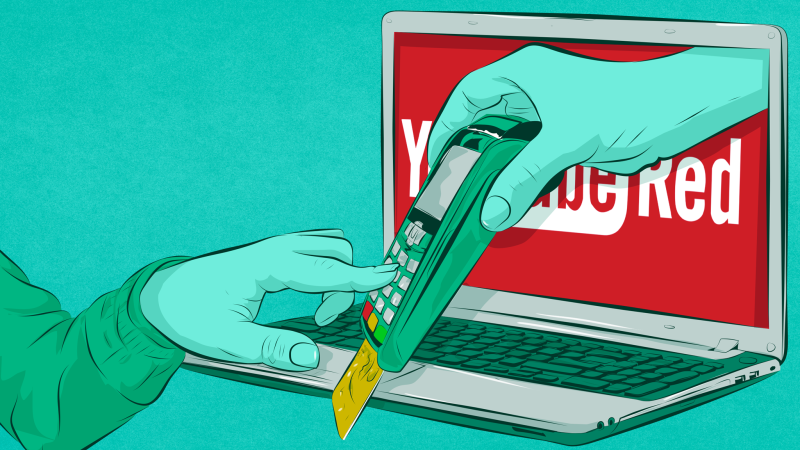 The numbers underscore just how difficult it is to convince folks to pay for something they’ve had for free all along.
The numbers underscore just how difficult it is to convince folks to pay for something they’ve had for free all along.
YouTube is ubiquitous. The platform has more than one billion monthly users, and is growing by the minute. Their advertising policies have allowed a growing number of regular Joes to make a nice (sometimes huge) income off their content. But early attempts to monetize YouTube via their YouTube Red subscription service, essentially turning YouTube from platform into media brand, aren’t making much headway.
“When YouTube Red launched a year ago, the plan was for the service to grow into a competitor against the likes of Netflix and Hulu,” writes Micah Singleton in The Verge. “Now, less than a year later, subscriber totals show that YouTube still has a long way to go before the public will accept paying a monthly fee for YouTube.”
YouTube Red is the ad-free alternative to regular YouTube, which is loaded with advertising to keep the lights on. Now, for 10 bucks a month, you can binge on all the ad-free videos you like, plus save videos for offline viewing, enjoy access to Google Play Music, and enjoy YouTube’s exclusive made-for-Red content, notes an article that announced the launch last year.
“With Red, YouTube is signaling a definitive shift from an ad-funded video-hosting service to a media company that will eventually go head to head with Hulu and Netflix,” wrote Ben Popper in the Verge at the time. He notes that Red had the potential to “dominate the industry” with its offerings, saying “if just 5 percent of its US viewers were to sign up for the service, it would add more than a billion dollars in annual revenue to the company’s bottom line.”
At far less than 1% a year in, is YouTube Red a flop or a hit in the making?
“We’re pleased with [the] momentum behind YouTube Red and we’re seeing healthy growth of members each month,” a YouTube spokesperson said to Singleton. “While we don’t release or comment on speculative numbers, we’re seeing strong engagement of the service in the four countries we’ve launched, leading us to invest in more originals series and movies for 2017 and increased marketing of YouTube Music.”
More content might help, in the same way exclusive cable TV content has helped the premium channels. But they are swimming in a rough stream trying to convince millions of users of the value of paying to access what they already get for the cost of a three-second intro ad.
Harder still? Changing the business concept from platform to publisher, when their massive popularity is based on their first iteration. The world seems to need YouTube to exist as a video service. This is where they excel. We appreciate their attempts to create new content (the world is always looking for good, new content) but it remains to be seen if it’s good enough to compete with the brands that are already excelling in that space. The real winners here are some of the genius videographers and visual storytellers, who are now playing in a highly competitive space.
